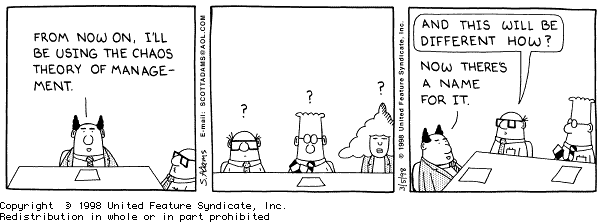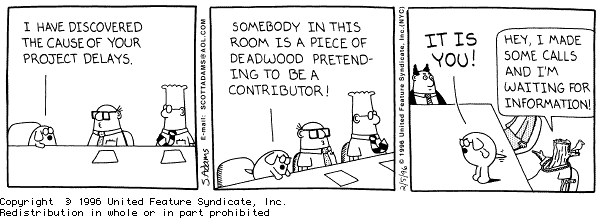Old Business:
- Collect Midterms
- Discuss the Nasty Persistent Database Assignment
- Personal Projects:
- papers: confirm topics ASAP
- sites: just submit URL
- moving the ads off of Lycos
- search engine submissions
- directory SE: Yahoo
- index SE: Altavista
- Group Projects:
- everybody got one? (19/24?)
- answer the questions
- status
Chapter 12: Enhancing Management Decision Making

Way back when: Chapter 2, page 41, Figure 2-2. TPS, KWS, DSS, MIS, ESS
DSS: Decision Support System
def: computer system at the higher levels of an org that combines data, analystic tools, and models to support semi-structured and unstructured decision making.
MIS: info on business performance helping managers monitor and control business; fixed, scheduled paper reports based on extracts from TPS.
DSS: support non-routine decisions, emphasizing change, flexibility, rapid response. Offers the USER control of data, tools, and sessions. A DSS supports the final three of Simon's stages of decision making: intelligence, design, choice, implementation.
Types of Decision Support Decisions:
- Model-Driven DSS: driven by the theory or model of the business
- Data-Driven DSS: driven by the accumulated data of the business
Data Mining
finds hidden patterns and relationships in large databases; infers rules to predict future behavior
Results / Processes include:
- Associations: not necessarily causations.
- Sequences: events linked over time
- Classification: using defined patterns to recognize a group
- Clustering: discovering patterns that define unknown groups
- Forecasting: using existing data to predict the future. (wow)
Components of a DSS
- DSS database
- DSS software system (OLAP, SPSS)
- models (physical, mathematical, verbal) (sensitivity analysis models)
Examples of a DSS: Table 12-2 on pg. 397
GIS: Geographic Information Systems: Defined, p.399; Illustrated, p.401
Web-Based DSS.
GDSS: Group Decision Support Systems
A DSS (facillitating solutions to UNstructured problems) that supports a group process over time and distance. See figure 12-3, p.405
Executive Support Systems
ESS help senior managers solve unstructured problems.
- Data drill-down
- combines disparate systems
- Balanced Scorecard: see graphic, top of pg. 411
- Developing ESS: (p.410)
- executives create special problems (actually, they pose the same problems, but they're omnipotent, control our money, and they're never wrong).
- expect success the first time
- intolerant of up-front work
- first proto-type better be great
- ESS may be gut-justified but not really cost-justified
Careers
- the paradox: demand is high, job security is low
- the career compact is gone
- you "own" your career; Bid Daddy ain't looking out for you
- personal networks: look around you!
- your resume is your credibility
- Before an interview, look up the company, the products, the project, the interviewer, and the department head on the web: check the links page.
- Anybody needs a reference:
Edward J. Quigley, Robert Morris College, PO Box 12429, Pittsburgh PA 15231
email: ejquig@sgi.net . Speak to me first!






